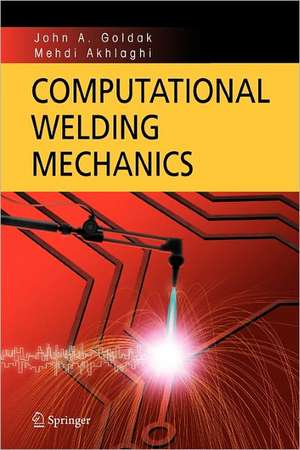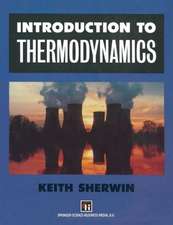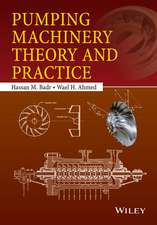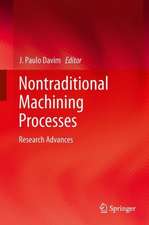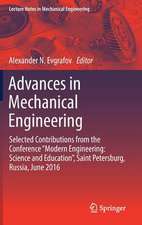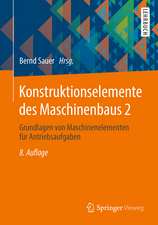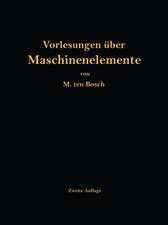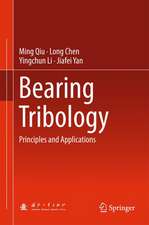Computational Welding Mechanics
Autor John A. Goldak, Mehdi Akhlaghien Limba Engleză Paperback – 29 oct 2010
Drawing upon years of practical experience and the study of computational welding mechanics the authors instruct the reader how to:
- understand and interpret computer simulation and virtual welding techniques including an in depth analysis of heat flow during welding, microstructure evolution and distortion analysis and fracture of welded structures,
- relate CWM to the processes of design, build, inspect, regulate, operate and maintain welded structures,
- apply computational welding mechanics to industries such as ship building, natural gas and automobile manufacturing.
Ideally suited for practicing engineers and engineering students, Computational Welding Mechanics is a must-have book for understanding welded structures and recent technological advances in welding, and it provides a unified summary of recent research results contributed by other researchers.
| Toate formatele și edițiile | Preț | Express |
|---|---|---|
| Paperback (1) | 1376.67 lei 6-8 săpt. | |
| Springer Us – 29 oct 2010 | 1376.67 lei 6-8 săpt. | |
| Hardback (1) | 1384.23 lei 6-8 săpt. | |
| Springer Us – 2 iun 2005 | 1384.23 lei 6-8 săpt. |
Preț: 1376.67 lei
Preț vechi: 1678.87 lei
-18% Nou
Puncte Express: 2065
Preț estimativ în valută:
263.46€ • 274.04$ • 217.50£
263.46€ • 274.04$ • 217.50£
Carte tipărită la comandă
Livrare economică 14-28 aprilie
Preluare comenzi: 021 569.72.76
Specificații
ISBN-13: 9781441935991
ISBN-10: 1441935991
Pagini: 336
Ilustrații: XII, 322 p.
Dimensiuni: 155 x 235 x 18 mm
Greutate: 0.47 kg
Ediția:Softcover reprint of hardcover 1st ed. 2005
Editura: Springer Us
Colecția Springer
Locul publicării:New York, NY, United States
ISBN-10: 1441935991
Pagini: 336
Ilustrații: XII, 322 p.
Dimensiuni: 155 x 235 x 18 mm
Greutate: 0.47 kg
Ediția:Softcover reprint of hardcover 1st ed. 2005
Editura: Springer Us
Colecția Springer
Locul publicării:New York, NY, United States
Public țintă
ResearchDescriere
Computational Welding Mechanics (CWM) provides readers with a complete introduction to the principles and applications of computational welding including coverage of the methods engineers and designers are using in computational welding mechanics to predict distortion and residual stress in welded structures, thereby creating safer, more reliable and lower cost structures.
Drawing upon years of practical experience and the study of computational welding mechanics the authors instruct the reader how to:
- understand and interpret computer simulation and virtual welding techniques including an in depth analysis of heat flow during welding, microstructure evolution and distortion analysis and fracture of welded structures,
- relate CWM to the processes of design, build, inspect, regulate, operate and maintain welded structures,
- apply computational welding mechanics to industries such as ship building, natural gas and automobile manufacturing.
Ideally suited for practicing engineers and engineering students, Computational Welding Mechanics is a must-have book for understanding welded structures and recent technological advances in welding, and it provides a unified summary of recent research results contributed by other researchers.
Drawing upon years of practical experience and the study of computational welding mechanics the authors instruct the reader how to:
- understand and interpret computer simulation and virtual welding techniques including an in depth analysis of heat flow during welding, microstructure evolution and distortion analysis and fracture of welded structures,
- relate CWM to the processes of design, build, inspect, regulate, operate and maintain welded structures,
- apply computational welding mechanics to industries such as ship building, natural gas and automobile manufacturing.
Ideally suited for practicing engineers and engineering students, Computational Welding Mechanics is a must-have book for understanding welded structures and recent technological advances in welding, and it provides a unified summary of recent research results contributed by other researchers.
Cuprins
Computer Simulation of Welding Processes.- Thermal Analysis of Welds.- Evolution of Microstructure Depending on Temperature.- Evolution of Microstructure Depending on Deformations.- Carburized and Hydrogen Diffusion Analysis.- Welded Structures and Applications of Welding in Industrial Fields.- Fracture Mechanics.- Input Data for Computational Welding Mechanics.
Caracteristici
How computer simulations and virtual welding are changing welding technology and the opportunities the changes will provide to improve welding technology
Emphasizes the critical issues of predicting distortion and residual stress
The weld simulators described will change how everyone involved in welding is trained and educated
Includes supplementary material: sn.pub/extras
Emphasizes the critical issues of predicting distortion and residual stress
The weld simulators described will change how everyone involved in welding is trained and educated
Includes supplementary material: sn.pub/extras
